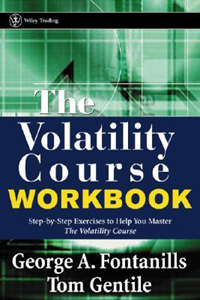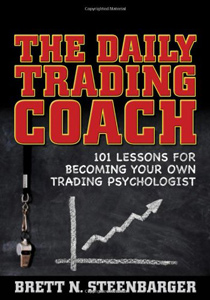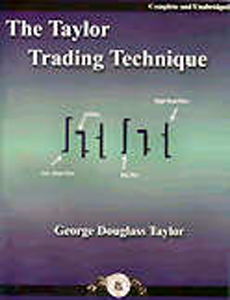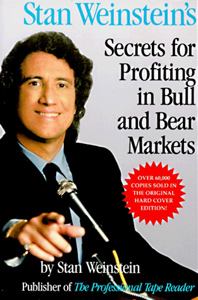The Volatility Course
Do you want to learn how to trade successfully in every market environment? If so, you have picked up the right book. The Volatility Course is designed to help you integrate the use of volatility in your trading approach–which will help you to become a more successful trader.
But in order to understand volatility, it is essential to grasp the basics of investing, which is why The Volatility Course first provides a comprehensive review of stock market basics, including equities, indexes, exchange-traded funds, price quotes and charts, and, most importantly, options.
Through expert advice and in-depth examples, this book:
- Explains what market volatility is and how to quantify it
- Focuses specifically on stock and options volatility and their corresponding strategies
- Provides a road map detailing how to identify the ups and downs of market volatility
- Describes the strategies that work best in high and low volatility markets
Filled with tips and techniques from renowned traders George Fontanills and Tom Gentile, The Volatility Course will help you understand the different types of volatility, how to measure and anticipate changes in volatility, and how to adapt your trading strategies to excel in prevailing market conditions. With The Volatility Course as your guide, you no longer have to wait for the right market conditions to trade successfully, because you’ll know how to trade under any market condition.
Positive Review of Book
This book is the perfect compliment to The Volatility Course by George Fontanills. It uses real case studies and guides you through step-by-step just like the main book. It tests your knowledge learned from the main coursebook. As with any new subject, learning options takes time and this book really helps the time you spend feel more productive.
Negative Review of Book
Readers would buy this book assuming that they will be able to master the concept of volatility, and use it in their options trading, but this is far from being the case.
One would expect a book that deals with an advanced concept such as volatility, to take it as a given that the readers are already familiar with all the basics such as "an option gives the buyer the RIGHT not the OBLIGATION" etc.I estimate that about 2/3 of the book deals with such beginner stuff.
On top of that, the authors don't even try to conceal that their primary purpose in writing the book is to deliver traffic to their premium web service.
I did learn a few things about volatility, but I was left with the feeling that I was tricked
Author Biography
GEORGE A. FONTANILLS heads Pinnacle Investments of America, Inc., a hedge fund and money management company. Pinnacle has recorded amazing returns for its investors with high-profit, low-risk trading strategies. For many years, Fontanills has been teaching the Optionetics seminar–one of the best attended courses in the world of finance–and spearheading the publication and dissemination of his strategies on Optionetics.com, a free Web site. Prior to Pinnacle, he was a principal at the American Stock Exchange. Fontanills has been featured in The Wall Street Journal, Barron’s, Red Herring, and appears on Bloomberg, CNNfn, and CNBC. His bestselling books include Trade Options Online, The Options Course, and The Stock Market Course (co-written with Tom Gentile), all published by Wiley.
TOM GENTILE is Chief Options Strategist for Optionetics and is featured in numerous publications including Fortune, Barron’s, and The Wall Street Journal. As George Fontanills’s trading partner and co-instructor at Optionetics seminars, Gentile’s passion for managed risk trading and straightforward style have added to his critical acclaim as one of the best trading instructors in the country.
Table of Contents
- Chapter 1. Crisis and Chaos on Financial Markets.
- Chapter 2. Volatility in the Stock Market.
- Chapter 3. Historical Volatility.
- Chapter 4. Trading Historical Volatility.
- Chapter 5. The World of Stock Options.
- Chapter 6. Implied Volatility.
- Chapter 7. VIX and Other Sentiment Indicators.
- Chapter 8. Exploiting Low Volatility.
- Chapter 9. Exploiting High Volatility.
- Chapter 10. Volatility Skews.
- Chapter 11. Final Summary.
- Appendix A. Studying the Market.
- Appendix B. Stock Charts and Technical Tools.
- Appendix C. Statistical and Implied Volatility.
- Appendix D. Sentiment Indicators.
- Appendix E. Using Risk Graphs.
- Appendix F. Option Reviews.
- Appendix G: Paper Trading Your Way to Success.
Discover more Trading books at BookofTrading.com!
- How to Trade Forex and Gold Options
- How to Trade the Gold Price and Profit!
- Forex Trading the EUR/USD Pair € EURO and $ US Dollar
- How to Trade Stock Market Indices S&P500
- How to Trade Crude Oil
- Forex Trading Psychology
- What Are Broker Recommendations?
- Free Tickets to Trading & Investing Seminar & Expo ($18) Brisbane 2013
- Stock Calc App
- All About Warrants
- Introduction to Exchange Traded Funds
- Introduction to Exchange Traded Funds: Features
- Introduction to Exchange Traded Funds: Domestic ETFs
- Introduction to Exchange Traded Funds: International ETFs
- Exchange Traded Commodities
- Australian Stock Scan
- Australian Online Share Trading
- List of Trading Books
- Interesting Thoughts about the Australian Dollar
- What's the Meaning of Hawkish?
- Do You Know How To Use the P/E Ratio
- Trading, Religion and Politics - Do They Have Anything in Common?
- Shares that are Volatile that Double and Half in the Short Term
- Telstra (TLS) T3
- Margin Call by E-mail
- The Cost of Holding a Position
- Lack of Disclosure: Compensation from ASX Listed Company
- Unrealistic Returns and Benchmarks
- CMC Markets Down
- Quality versus Quantity Forex Trading
- Woolworths 1H Sales $30.7bn up 3.2%
Date added 31-01-2013 - ASIC Fines CommBank's CommSec
Date added 25-09-2012 - Industry Super Network Calls to Ban High Frequency Trading (HFT)
Date added 22-09-2012 - NAB Launches Online Share Trading Platform
Date added 19-09-2012 - Reserve Bank of Australia Says 23 Countries Holding AUD
Date added 18-09-2012 - Australia Post Digital Mailbox
Date added 10-09-2012 - Winners and Losers of Trading for Week 2
Date added 16-01-2012 - 2012's First Week of the Best and Worst Traded Stocks
Date added 09-01-2012 - 2011's Last Best and Worst Traded Stocks
Date added 05-01-2012 - Best and Worst Pre-Christmas Traded Stocks
Date added 30-12-2011 - Trading Winners and Losers for Dec. 12-16
Date added 19-12-2011 - Best and Worst Traded Stocks for Dec. 5-9
Date added 13-12-2011 - Top 3 Best and Worst Traded Stocks
Date added 05-12-2011 - ASX Glitch Trading Halt
Date added 27-10-2011 - Worst Trade Stocks (and the Best)
Date added 06-08-2011
Top 150 Public Companies Listed on the Australian Stockmarket as at 29/05/2009
- BHP Billiton
- Westpac Banking Corporation (WBC)
- Commonwealth Bank of Australia (CBA)
- National Australia Bank (NAB)
- Telstra (TLS)
- ANZ
- News Corporation (NWS)
- Woolworths Limited(WOW)
- Woodside Petroleum Limited (WPL)
- Rio Tinto
- Westfield Group (WDC)
- Westfarmers Limited (WES)
- QBE Insurance
- CSL
- Newcrest Mining Limited (NCM)
- Origin Energy Limited (ORG)
- Santos Limited (STO)
- AMP Limited (AMP)
- Macquarie Group (MQG)
- Foster’s Group Limited (FGL)





